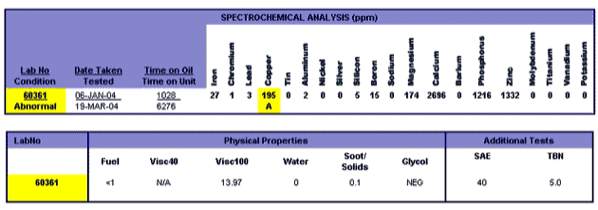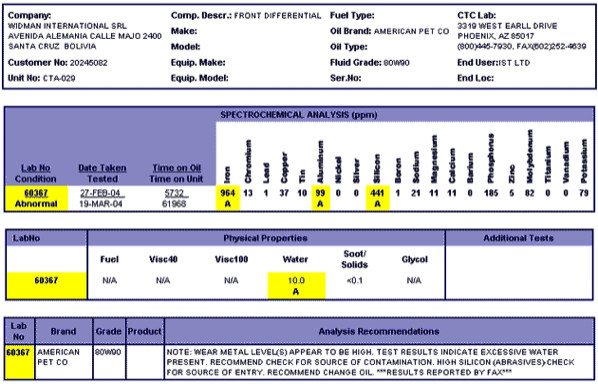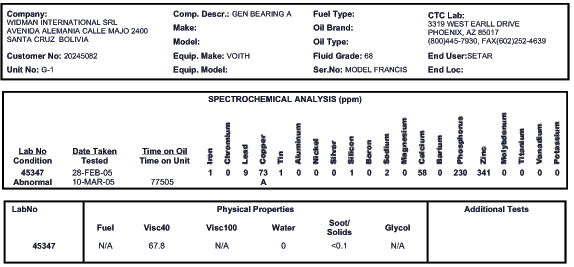Internal Corrosion
Oils have a certain amount of additives to protect the parts from corrosion, but the longer you leave it in the equipment, the higher the risk of problems from the entrance of water or chemicals from the air.
In the first example, we have a stationary generator that did not show any corrosion before being drained for transport to another location. Two months later it was installed in the new location. The first oil sample had 195 ppm of copper corrosion from the oil cooler that was exposed to the air during those 2 months without oil circulating to protect it.

In this second example we have the front differential of a 4x4 pickup that crossed various rivers and continued using the truck with 10% dirty water. The rear differential had 3%
When it finally was taken to the shop, the rust and wear were 964 ppm of iron that could be read in the oil analysis. the bigger particles (over 5 microns) normally do not show up.
When it finally was taken to the shop, the rust and wear were 964 ppm of iron that could be read in the oil analysis. the bigger particles (over 5 microns) normally do not show up.

In this example we have oil in the bearings of a hydroelectric turbine. It shows high corrosion or wear of copper and lead. The oil is a hydraulic oil with a low level of additives, contaminated with 58 ppm of calcium that either comes from water or another oil. It also has 2 ppm of sodium that is fatal for the bearings.


